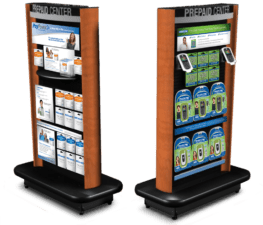Home » Assessing and Improving POP Display Performance
Assessing and Improving POP Display Performance

After deploying Point of Purchase (POP) displays, the next critical step is to monitor and evaluate their effectiveness. This phase is essential to understanding the impact of the displays on customer engagement and sales, and it provides valuable insights that can guide future marketing strategies and display designs. This blog details the processes of performance tracking, gathering feedback, and making necessary adjustments to ensure the continual improvement of POP displays.
Performance Tracking: Measuring Success
Utilizing Sales Data
The most direct measure of a POP display’s effectiveness is its impact on sales. Track the sales data of products featured in the display and compare it to sales figures before the display’s installation or with similar products not included in the display. This data provides a clear indication of the display’s ability to convert interest into purchases.
Collecting Customer Feedback
Gathering feedback directly from customers can provide insights into how the displays are perceived and their influence on buying decisions. Feedback can be collected through surveys, interviews, or even informal conversations at the point of sale.
Conducting Observational Studies
Observational studies involve watching how customers interact with the display. Note factors such as the time spent at the display, the interaction with products, and the overall traffic. Observational data can help understand customer behavior patterns and engagement levels.

Feedback and Adjustments: Continuous Improvement
Analyzing Feedback
Once data is collected, analyze it to identify trends and patterns. Look for feedback that indicates what customers like about the display and what elements might be causing confusion or disinterest. This analysis can pinpoint what aspects of the display are most effective and which ones need improvement.
Implementing Adjustments
Based on the analysis, implement adjustments to improve the display. This might involve changing the layout, updating the messaging, or even altering the design elements like colors or lighting. Small, iterative changes can often lead to significant improvements in engagement and effectiveness.
A/B Testing
To determine which adjustments are most effective, conduct A/B testing by creating different versions of your display. This method allows you to compare results directly and make data-driven decisions about which elements to implement across all displays.

Establishing a Routine for Review
Regular Reviews
Set up a schedule for regular review and maintenance of POP displays. This ensures that displays continue to function as intended and remain visually appealing to customers.
Updating Displays
Keep displays fresh and relevant by updating them regularly to align with new marketing campaigns, seasonal changes, or new product launches. This not only maintains customer interest but also ensures that the POP displays continue to meet business goals.

Conclusion
Monitoring and evaluation are critical to maximizing the effectiveness of POP displays. By tracking performance, gathering feedback, and continuously making informed adjustments, businesses can enhance the impact of their displays. This ongoing process not only improves the current displays but also provides invaluable insights that can be applied to future display projects, ultimately leading to better customer engagement and increased sales.
If you are interested in POP displays, then partner with Brown Packaging today to get started.
With new tariff proposals and continued trade uncertainty, 2026 is shaping up to be another pivotal year for packaging sourcing strategy. Many companies that shifted production away from China in
Following multiple rounds of tariff changes and trade policy adjustments, 2026 marks a turning point for U.S. packaging buyers. Many who previously transitioned from China to domestic or nearshore suppliers
Shifting packaging production from China to the U.S. can help stabilize costs, reduce tariff exposure, and shorten lead times. But the transition process requires careful planning. For packaging buyers, the
RSC boxes are known for their efficiency and versatility, but their performance ultimately comes down to strength. Buyers often see numbers like ECT, BCT, and burst strength on specifications —
Home » Assessing and Improving POP Display Performance





